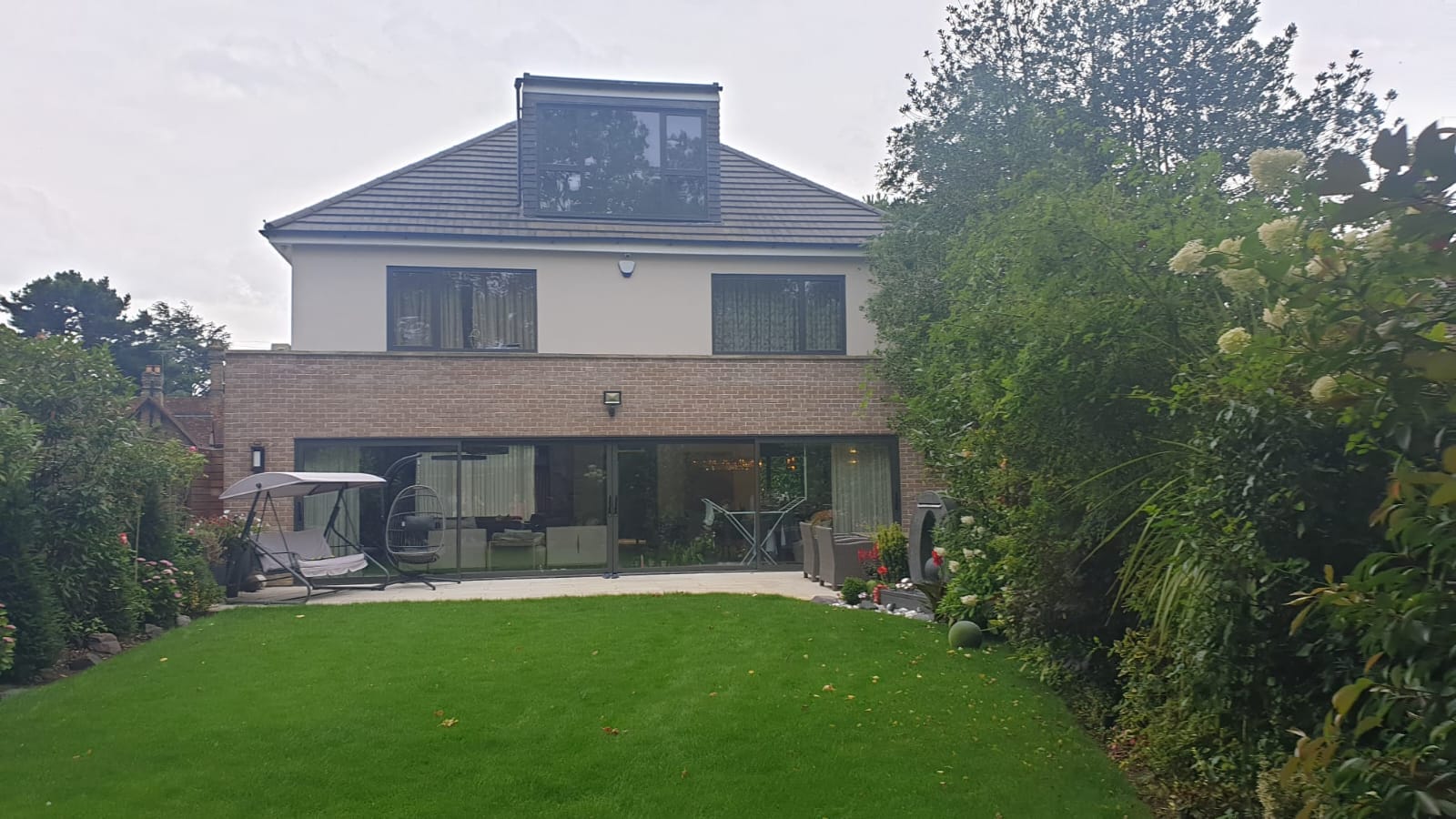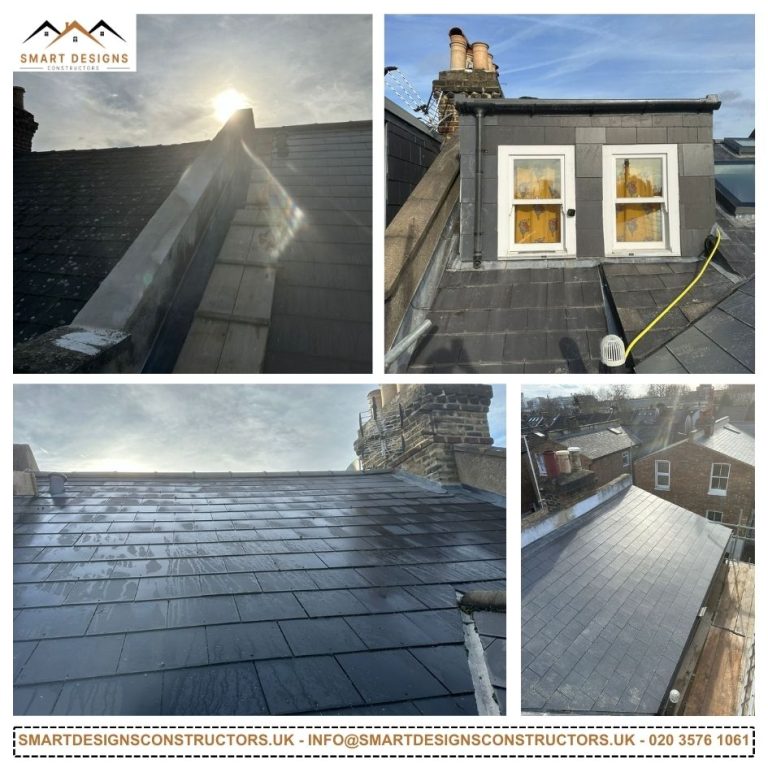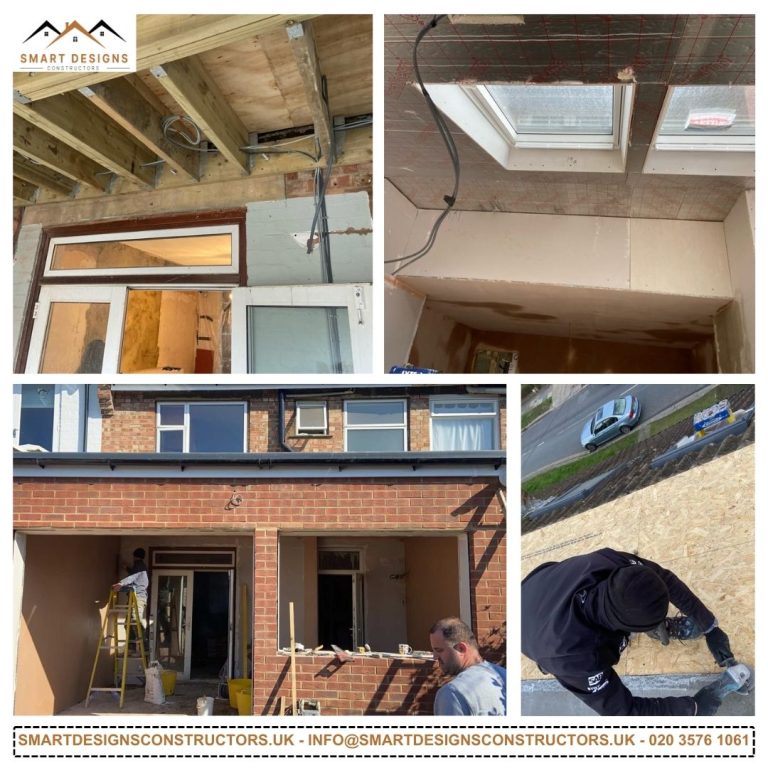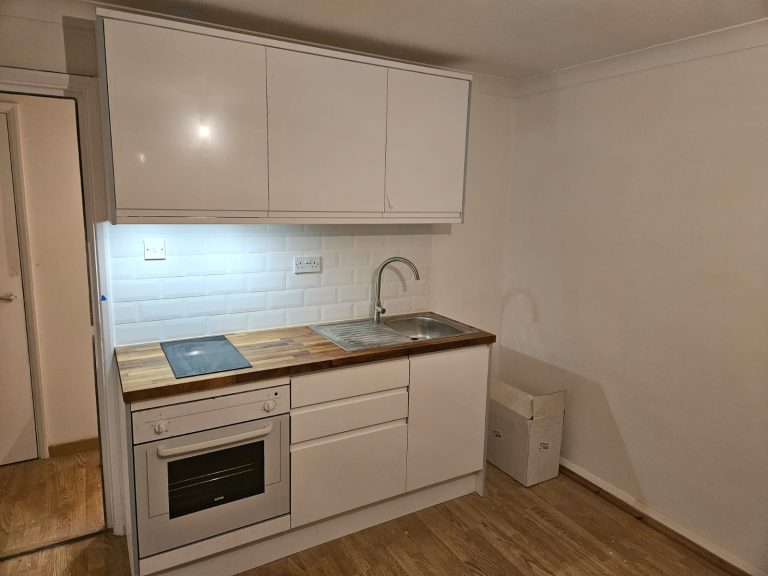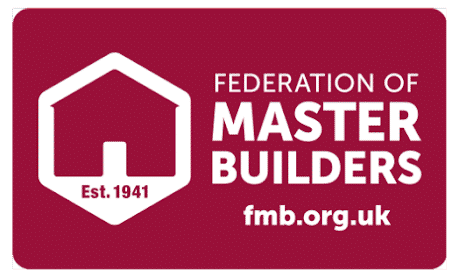A step-by-step to build a house in Hillingdon London 🏡
A step-by-step guide to building a house provides clarity for construction projects. When you understand each phase of homebuilding, you can accurately schedule and smoothly manage the process. For self-builders and owner-builders working with Smart Design Constructor Ltd., knowing what to expect at every stage is crucial. It allows you to plan materials, hire contractors…
A step-by-step guide to building a house provides clarity for construction projects. When you understand each phase of homebuilding, you can accurately schedule and smoothly manage the process.
For self-builders and owner-builders working with Smart Design Constructor Ltd., knowing what to expect at every stage is crucial. It allows you to plan materials, hire contractors at optimal times, and feel in control of the build.
Whether you are project managing with Smart Design Constructor Ltd. or doing some of the work yourself, a stage-by-stage overview gives you essential knowledge. It provides confidence to coordinate tradespeople and tasks efficiently. You also gain insight to engage at the right points in the process.
Ultimately, understanding the sequential homebuilding steps empowers you to execute seamlessly with Smart Design Constructor Ltd. With a clear picture of the road ahead, you can build with less stress and achieve greater success.
Here is a rewrite focused on house building in London:
Constructing a house in London is a multi-phase process, divided into pre and post-watertight stages.
A property is deemed watertight when the exterior is sealed – walls erected, roof on, windows and doors installed. At this point, it resembles a finished home from the outside.
For London self-builders, achieving watertight status is an exciting milestone. It signals the heavy lifting is done and tangible progress will now be seen daily. Depending on size and complexity, most builders would expect a London house to become watertight within 3-6 months.
Once watertight, interior work can begin. Owing to interdependencies, trades must follow a careful schedule – electricians before plasterers, for example. This phase often takes longer than the watertight stage.
From breaking ground to move-in typically takes 6-12 months in London. Some prefab builders claim 4-6 months from start to finish. Many owner-builders take 3+ years. The schedule varies hugely based on the approach.
Below is an overview of the key phases, giving London self-builders insight into the progression from breaking ground to final sign-off. Understanding the sequential steps provides clarity on the road ahead.
Preparing the Site for House Building in London
After purchasing your plot and completing planning, the first step is preparing the site. This involves clearing debris and vegetation, as well as setting up facilities for tradespeople.
Tasks in this pre-build stage include:
– Groundworkers create access to the site
– Clear the site and strip topsoil, stacking retained materials out of the way
– Set up a site office with drawings and safety equipment
– Install a portable toilet
– Position a secured storage container, rented or purchased
– Water company brings supply to boundary Stopcock
– Plumber connects temporary water standpipe
– Surveyor marks out the house on the cleared site
– Deliver and stack bricks/blocks clear of future work
– Set up a cement mixer near the cement store and aggregate piles
With the site cleared and equipped, it is ready for construction to begin on your new London home.
- Laying the Foundations
The foundations are the next critical step. Their cost is a major budget variable for self-builds, so choose the most suitable system early on via a geotechnical study.
With your site ready, the groundworkers can start. Tasks include:
- Excavate trenches for foundations
- Get building control/warranty inspection approvals
- Install reinforcement bars, mesh or cages
- Add any compressible material or slip membranes
- Lay service ducts through foundations
- Erect scaffolding if needed and shutter any steps
- Pour concrete footings and level
- Get building/warranty approval to proceed
- Bricklayers build up blockwork to damp proof course
- Install air vents and drainage lintels
- Fill cavities with concrete to ground level
- Install damp proof courses and radon membranes
With the right foundations laid, your London home is ready for the structure to be built up.
- Constructing the Superstructure in London
Starting the superstructure is an exciting milestone when building a house in London. Be aware of when building inspector sign-offs are needed.
Tasks include:
- Groundworkers dig trenches for services, laying pipes and ducts
- Load and position concrete floor beams in each bay
- Install protruding drainage and vent pipes
- Infill between floor beams with blocks
- Lay coursing blocks and ventilation grilles
- Brush grout
- Arrange building control/warranty inspection
- Start building superstructure
- Install templates for windows, doors, etc.
- Erect first level of scaffolding
With the superstructure underway, your London home starts taking shape. Stay on top of inspections to keep the build moving forward smoothly.
Continue Building the Superstructure
- Bricklayers continue building walls and chimneys
- Install and bed lintels, including for fireplaces
- Install flue liners as work progresses
- Build in meter boxes for gas and electricity
- Electrician installs temporary consumer unit
- Service suppliers complete work to boundary
- Plumber reroutes water to stopcock
- Electricity provider installs meter and connects
- Erect second level of scaffolding
- Use crane to lift in first floor beams (if needed)
- Add plasterboard batten clips
- Lay infill blocks
- Brush grout
With the superstructure walls and services underway, the form of your London home becomes clear. Stay coordinated with trades and inspectors to keep the build on track.
Progressing to the Wallplate in London
- Continue building walls up to the wallplate
- Erect third and fourth levels of scaffolding
- Scarf, bed and tie down wallplate with straps
- Get warranty inspection if needed
- Carpenters build end trusses as templates
- Build up gable ends and chimney
- Add more scaffolding lifts at the gables
- Plumber installs lead flashings, trays and skirts on chimney
- Plumber fits vent pipe flashings through roof
- Bricklayers finish and fit chimney pot
- Bricklayers point chimney flashings
With the walls complete to the wallplate, your London home takes major shape. Stay on schedule with inspections and trades to keep momentum.
- BUILDING A HOUSE’S ROOF
Constructing the Roof in London
The roof takes shape as a major milestone.
- Carpenters sling roof trusses and fix to wallplate
- Install all bracing and binders at nodes
- Fix layboards to valleys
- Build any dormers
- Add fascia, soffit and ventilation
- Get warranty inspection if required
- Install any roof tanks now
Adding Roof Coverings in London
- Roofers cut and lay undercloaking at verges
- Felt and batten roof
- Lay tiles/slates
- Bed and install ridge/hip tiles
- Install valley tiles or lead/fiberglass valleys
- Plumber dresses down flashings and skirts
- Paint/stain fascias, soffits and bargeboards
With the roof complete, your London home is fully enclosed. Careful waterproofing protects from the elements.
- EXTERIOR AND INTERIOR FITTINGS TASKS WHEN BUILDING A HOUSE
Interior and Exterior Finishing in London
With the structure complete, focus turns to internal and external finishing.
- Plumbers install guttering
- Window suppliers fit external joinery
- Plasterers complete any rendering
- Dismantle scaffolding
- Plumbers add downpipes, connecting to drainage
- Apply external paint/finish
- Carpenters start first fix: door linings, stud partitions, boards
- Install plasterboard noggins and box vents
- Carpenter and plumber build any roof stands
- Carpenter fits loft hatch
Completing the shell and first fix gets your London home ready for second fix trades inside.
- FIRST FIX STAGE OF BUILDING A HOUSE
First Fix Electrics and Plumbing in London
The mechanical systems take shape at this stage:
- Plumbers install floor membrane and insulation, sealing joints
- Lay underfloor heating loops and fix
- Install first fix plumbing for water and waste
- Run internal gas pipes
- Connect UFH to manifolds and outlets
- Install screed over UFH and leave to cure
- Add a protective cover over screed
- Electrician runs wiring for lights and power with backplates
- Position consumer unit(s)
- Wire external lighting
- Install TV/satellite and phone cables
- Run any home technology systems
With first-fix electrics and plumbing complete, your London home nears the final stretch.
- DRAINAGE AND EXTERNAL WORKS
Drainage, Driveways and Paths in London
- The exterior takes shape:
- Groundworkers dig trenches for drainage runs
- Backfill trenches 150mm with gravel
- Lay drains at required gradients
- Build manholes, rodding eyes and gullies
- Get building inspector approval of drains
- Haunch over drains with gravel
- Backfill drainage trenches
- Approved contractor connects to main sewer
- Carpenter completes noggings for plasterer
- Groundworkers build driveways and paths
- Bricklayer constructs any fireplaces
- Gas meter installed and connected
- Plumbers and electricians coordinate bonding
With drainage, access and landscaping progressing, your London plot transforms into a developed property.
- PREPARING CEILINGS/DRY LINING
Focus on Interiors in London
Attention turns to the inside finishes:
- Carpenter fits main staircase and protects
- Dryliners tack ceilings
- Line external and block walls with dot and dab plasterboard
- Tack internal stud walls and pipe casings
- Fill joints and tape with scrim
- Mesh joints between different materials
- Seal all joinery inside and out with mastic
- Skim coat all walls and ceilings
- Decorator treats backs of skirtings and architraves
- Install roof insulation
With plastering, joinery and painting underway inside, your London home nears completion. Careful finishing creates quality living spaces.
- SECOND FIX CARPENTRY
Fittings and Finishes in London
The final details come together:
- Carpenters hang internal doors
- Fit skirtings and architraves
- Install staircase bottom tread, balustrade, handrail
- Fit loft hatch and ladder
- Lay and protect timber flooring
- Tile floors and protect
- Install built-in bedroom/bathroom furniture
- Fit kitchen units
- Connect appliances
- Decorator touches up paintwork
With the fittings, floors and finishes in place, your London home nears completion. Care and protection prevents damage before move-in.
- SECOND FIX STAGE ELECTRICS AND PLUMBING
Second Fix Electrics and Plumbing in London
The mechanical systems are finalized:
- Connect all wiring to consumer unit
- Position and plumb boiler, then wire in
- Fit and plumb sinks, bonding and earthing
- Install and plumb all bathroom suites
- Fit and plumb radiators and towel rails
- Connect underfloor heating manifolds
- Electrician checks bonding and earthing
- Wire and commission boiler; install controls
- Plumber and electrician fire up and test boiler
- Flush and pressure test all pipework
- Commission heating on test mode
With second fix electrics and plumbing complete, your new London home’s services are ready to go. Thorough testing ensures everything operates as it should.
- Decorating Your New London Home
For self-builders using contractors, decorating may be a good final task to take on yourself. This allows potential cost savings if the budget is tight.
However, only take on what you can capably do. Poor DIY decorating may require expensive corrections by professionals. Tasks at this stage include:
- Filling nail holes and imperfections
- Applying primer/sealer coats
- Painting/papering walls and ceilings
- Varnishing woodwork and joinery
- Cleaning floors and windows throughout
- Touching up any damage before move-in
Decorating achieves a personalised finish. But avoid overstretching your skills to prevent expensive fixes. Get professional help if unsure.
Enjoy adding those all-important finishing touches to your new London home!
- LANDSCAPING
When working on a tight budget, some self-builders opt to postpone landscaping until after completing the construction of their house. However, there are potential advantages to concurrently addressing landscaping during the house construction process, provided that careful planning is undertaken to determine your landscaping needs and identify the right professionals for the job.
Consider the following steps to seamlessly integrate landscaping with your house-building project:
- Engage groundworkers or landscape gardeners to level the ground and prepare it for landscaping.
- Ensure the timely placement of topsoil, with additional shipments if necessary, to meet landscaping requirements.
- If the site hut is intended for use as a garden shed, relocate or remove it as needed.
- Dispose of or return secure site storage that is no longer required.
- Task groundworkers with completing the driveway surface.
- Lay patio slabs as part of your landscaping plan.
- Employ bricklayers to construct any necessary dwarf or decorative walls.
- Prepare lawned areas by leveling them, making them ready for seeding or turfing.
- If required, enlist approved contractors to handle bellmouth and kerbing work related to the road.
By coordinating these landscaping efforts alongside your house construction, you can potentially streamline the process and achieve a cohesive and well-integrated result.
- Final Stage
And the time has come! Just a few more tasks to complete before move in day…
- The whole house to be thoroughly cleaned out
- All windows were polished and all labels were removed from the glass and appliances
- All polystyrene packing to be removed from cookers
- All stabilising bolts to be removed from washing machines/driers
- Site toilet and any remaining plant on hire to be off-hired
- Readings to be taken on all meters
- Central heating switched to ‘run’
- Telephone company to connect
- Contractors to install TV aerials and/or satellite dishes
- All trades return to work through items on the snagging list
- Carpets to be laid
- Local authority to be advised of completion to arrange for council tax valuation
- Energy Performance Certificate to be prepared and sent to building control
- Building control final inspection and issuing of Completion Certificate
- Warranty inspector’s final inspection and issuing of warranty
- Arrange protective covering for floor surfaces prior to delivery of furniture
🏡 Your Dream Home Awaits with Smart Designs Constructors! 🏡
For over two decades, Smart Designs Constructors has been a trusted leader in the art of crafting stunning new houses. With an impressive 22 years of experience, we’ve consistently delivered homes that exceed expectations, creating lasting memories for families like yours.
🏆 Masters in the Craft 🏆
We take immense pride in being recognized as Master Builders. Our commitment to excellence and quality craftsmanship is at the heart of everything we do.
Ready to take the first step toward your dream home? Contact us today at:
- 📞 Phone: 020 3576 1061
- 📧 Email: info@smartdesignsconstructors.uk
Don’t forget to explore our latest new build project in Helingdon! Your perfect home might just be a click away.

